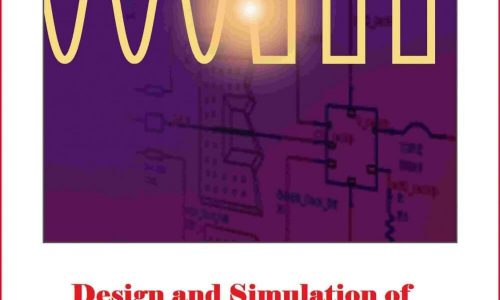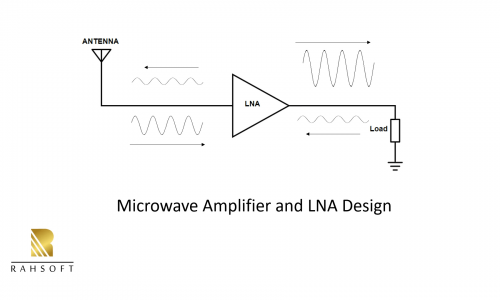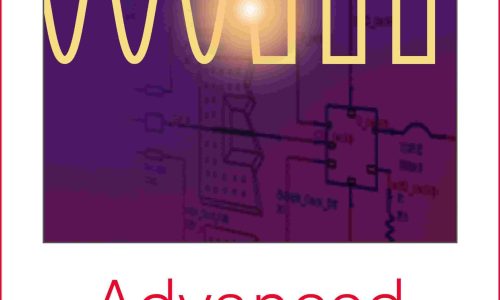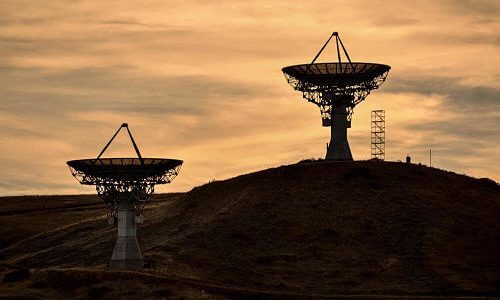Welcome to the first course of the RF certificate series. In this topic we are going to explain the basic concepts of RF design in a simplest way possible. The audience for the RF basic course are electrical engineers, technicians, sales engineers and other employees of an RF-related company who want to have general idea of RF basic concepts. At the end of this course you will have a general knowledge of the fundamental topics discussed in RF industry. This is a great crash course for people who have interviews and need to a refresher on the RF topic within a few hours and go from zero knowledge to having a general understanding of most topics.
One of the most important things for us to have the most updated materials needed in the industry. Ahsan Ghoncheh, our Co-Founder and Technical Adviser, consults with different RF engineers at Broadcomm, Qualcomm, Apple and Skyworks on building practical curriculum and topics that are needed and in demand in the industry. So instead of going the academic approach, we are going to an industry approach.
I want to thank you for choosing Rahsoft and trusting us. Please feel free to contact us. We are truly excited and grateful to be going with you on this journey to becoming an RF expert. If you have any further questions, do not hesitate to contact us.
Instructor: Ata Sarrafi
Advisor: Ahsan Ghoncheh ahsan@rahsoft.com
Section1:IntroductionAn introduction to Rahsoft and the instructor
What are the requirements?
- This course itself is the prerequisite for the RF Certificate of Rahsoft
- This course is made to be as simple as possible for students to get the basics before jumping into complicated topics in the coming RF courses.
What am I going to get from this course?
- This is a very basic fundamentals of RF, The main purpose of this course is to simply without providing any formulas or engineering skills provide the basic knowledge and topics needed in the RF field. At the end of this course you would have a general idea of Radio Frequency and related topics and components used day to day on this topic. This course briefly explains the topics without getting deep into each discussion just to have the student get a general idea.
- The student can then choose to go toward the RF Certificate provided by Rahsoft which in there we would be going deep into the topics by providing hand on design and examples from the industry. At the end of the certificate the student would have a complete knowledge of RF as well as some actual simulations such as Power Amplified Design to add to his resume. Again this would be for a person who would be taking all 15 courses which starts with this course as the first one.
What is the target audience?
- Prerequisite for students planning to get Rahsoft RF Certificate which is a complete RF course package directing students from basic or zero knowledge in RF to becoming an Expert in the Radio Frequency Industry .
- This course is set for professionals working in the Radio Frequency and Communication industry whom need to have a general idea of RF in order to understand main topics at work.
- Undergraduate Electrical Engineering Students
- Sales Engineers in the RF Industry
- Project managers in the RF Industry
- Test Engineers in the RF Industry
- RF Technicians
Curriculum For This Course
Frequency
Noise
V-I-F-Z
Power
Transceiver , Transmitter, Receiver
Antenna
Filters
Components
Low Noise Amplifies
Mixer
VCO and Oscillators
Phase Lock Loop
Power Amplifier
Modulation
Linearity
Phasor
Matching
Attenuator
S-parameter
Smith-Chart
Software
Measurement Devices
Radio Frequency Certificate Courses Available and Prerequisites
Course Features
- Lectures 40
- Quizzes 28
- Duration 5 hours
- Skill level All levels
- Language English
- Students 6802
- Certificate Yes
- Assessments Yes
Curriculum
- 2 Sections
- 40 Lessons
- 900 Weeks
- Introduction5
- 63
- 2.11.1.1 What is Radio Frequency ?6 Minutes
- 2.2Quiz: T01_L01_P0110 Minutes1 Question
- 2.31.1.2 Frequency VS Application8 Minutes
- 2.4Quiz : T01_L01_P0210 Minutes1 Question
- 2.51.2.1 Noise in Radio Frequency13 Minutes
- 2.6Quiz : T01_L02_P0110 Minutes2 Questions
- 2.71.2.2 Signal to Noise Ration SNL3 Minutes
- 2.8Quiz : T01_L02_P0210 Minutes2 Questions
- 2.91.3.1 V I F Z P8 Minutes
- 2.101.3.2 Power3 Minutes
- 2.11Quiz :T01_L03_P0210 Minutes2 Questions
- 2.121.3.3 dB and dBm5 Minutes
- 2.131.3.3.Ex PdBm Example2 Minutes
- 2.141.4.1 RF module, transmitter, receiver10 Minutes
- 2.151.4.2 RF Transceiver7 Minutes
- 2.16Quiz : T01_L04_P0110 Minutes2 Questions
- 2.171.5.1 Antenna Basics7 Minutes
- 2.18Quiz : T01_L05_P0110 Minutes2 Questions
- 2.191.5.2 Types of Antenna7 Minutes
- 2.20Quiz : T01_L05_P0210 Minutes2 Questions
- 2.211.6.1 RF Filters6 Minutes
- 2.22Quiz : T01_L06_P0110 Minutes2 Questions
- 2.231.6.1.Ex RF Filter Examples4 Minutes
- 2.241.6.2 Filter Types , Off-Chip On-Chip Filters9 Minutes
- 2.25Quiz : T01_L06_P0210 Minutes1 Question
- 2.261.7.1 Active Versus Passive Components in RF3 Minutes
- 2.27Quiz : T01_L07_P0110 Minutes2 Questions
- 2.281.8.1 Low Noise Amplifier (LNA)8 Minutes
- 2.29Quiz : T01_L08_P0110 Minutes2 Questions
- 2.301.9.1 Mixer12 Minutes
- 2.31Quiz : T01_L09_P0110 Minutes2 Questions
- 2.321.10.1 Oscillator and Voltage Controlled Oscillator (VCO)9 Minutes
- 2.33Quiz : T01_L10_P0110 Minutes2 Questions
- 2.341.11.1 Introduction to PLL Phase Lock Loop Basics13 Minutes
- 2.35Quiz : T01_L11_P0110 Minutes2 Questions
- 2.36Quiz : T01_L11_P0210 Minutes2 Questions
- 2.371.12.1 Introduction to Power Amplifier Basics15 Minutes
- 2.38Quiz : T01_L12_P0110 Minutes2 Questions
- 2.391.13.1 Introduction to analog modulation16 Minutes
- 2.40Quiz : T01_L13_P0110 Minutes2 Questions
- 2.411.13.2 Introduction to digital modulation4 Minutes
- 2.42Quiz : T01_L13_P0210 Minutes1 Question
- 2.431.14.1 Introduction to linearity in RF Systems12 Minutes
- 2.44Quiz : T01_L14_P0110 Minutes2 Questions
- 2.451.15.1 Introduction to phasor in RF systems6 Minutes
- 2.47Quiz :T01_L15_P0110 Minutes2 Questions
- 2.481.15.2 Phasor circuit example8 Minutes
- 2.491.16.1 Introduction to reflection, transmission and matching in RF systems7 Minutes
- 2.50Quiz : T01_L16_P0110 Minutes2 Questions
- 2.511.16.2 Matching Why do we use 50 ohms?6 Minutes
- 2.52Quiz : T01_L16_P0210 Minutes1 Question
- 2.531.17.1 Introduction to RF attenuators11 Minutes
- 2.54Quiz : T01_L17_P0110 Minutes2 Questions
- 2.551.18.1 Introduction to S Parameters12 Minutes
- 2.56Quiz : T01_L18_P0110 Minutes2 Questions
- 2.571.19.1 Introduction to smith chart fundamentals11 Minutes
- 2.58Quiz : T01_L19_P0110 Minutes1 Question
- 2.591.20.1 what are the software used in RF? ADS, Advanced Design System by Keysight7 Minutes
- 2.601.20.2 what are the software used in RF? Cadence Design Systems , AWR from NI, CST, HFSS6 Minutes
- 2.61Quiz : T01_L20_P0110 Minutes1 Question
- 2.621.21.1 What are the main RF measurement and RF testing Devices?15 Minutes
- 2.631.21.2 What are software used in RF testing and automation?4 Minutes
- 2.64Quiz : T01_L21_P0110 Minutes1 Question








1 Comment
Rf fundamental basic concepts and components is completed by spy